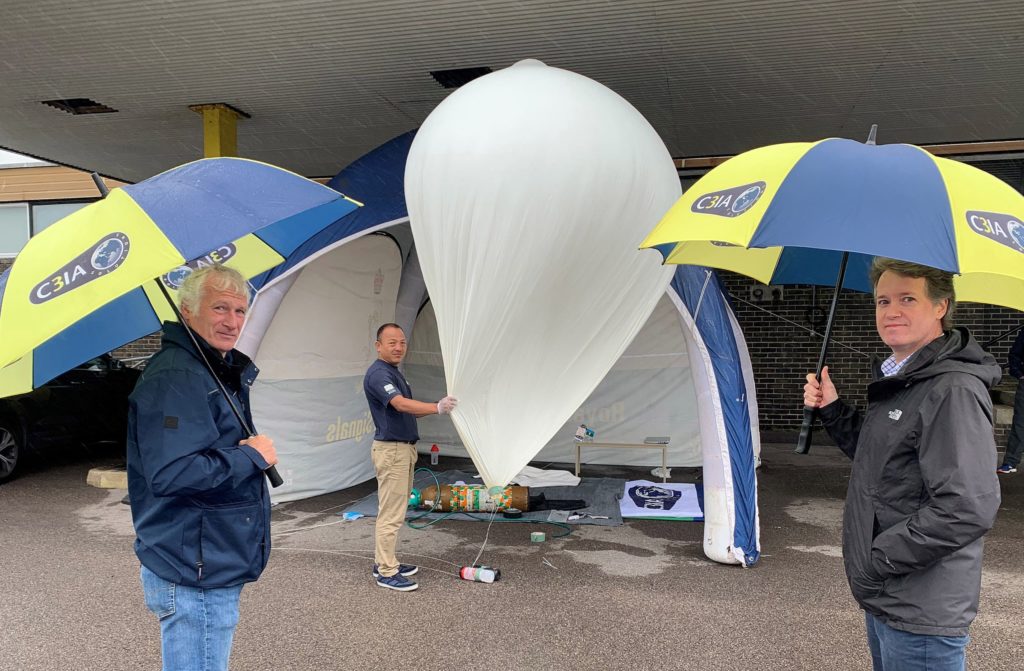A balloon carrying a Royal Corps of Signals cap badge – called a Jimmy – was sent into space to mark the corps’ 100th anniversary.
The Jimmy in Space project was sponsored by C3IA Solutions, a leading cyber security company based in Poole, Dorset.
Matt Horan, a former Signaller and security director of C3IA Solutions, was watching the launch at Blandford Camp with colleague Jim Hawkins.
Three Signals Senior NCOs undertook the project to complete their Foreman of Signals course, one of the technically toughest in the military.
With the sponsorship they were able to buy the equipment, including hydrogen and a balloon.
Despite atrocious conditions the balloon rose to 40,656 metres – 133,385 feet – and sent back photos.
Ben Steane, Danny Metcalfe and Jittan Rai who were behind the launch later recovered the balloon near Marlborough.
Matt Horan said: “It’s a real shame that the Signal’s centenary celebrations have been curtailed.
“But the Foreman of Signals course has continued and this project under difficult circumstances to send back photos from 130,000 feet was a huge success.
“The weather was atrocious which was why no world records were broken, but once the balloon was through the clouds it was plain sailing.
“The images sent back in real time are remarkable and I know the Royal Signals will be pleased that their cap badge has gone higher than anyone else’s.”
A Royal Warrant for the creation of a Corps of Signals was signed by the Secretary of State for War, Winston Churchill, on 28 June 1920.
Six weeks later, King George V conferred the title Royal Corps of Signals. Previously it had been part of the Royal Engineers.
Today, Signals units are among the first into action, providing the battlefield communications and information systems essential to all operations.
Royal Signals units provide the full telecommunications infrastructure for the Army wherever they operate in the world.
The corps has its own communications engineers, logistics experts and systems operators to run radio and area networks in barracks and the field.
It is responsible for installing, maintaining and operating all types of telecommunications equipment and information systems, providing command support to commanders and their headquarters, and conducting electronic warfare against enemy communications.
